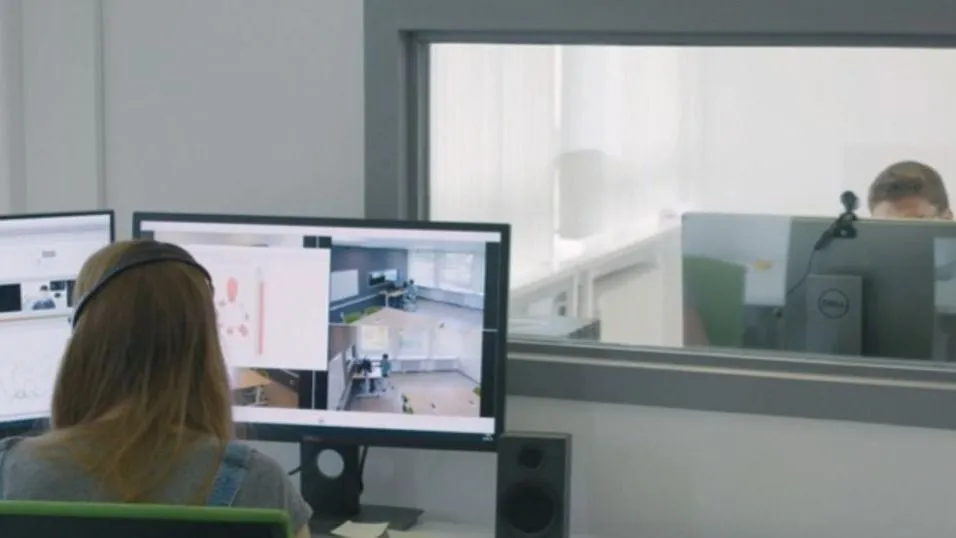Working from home strategies
In the midst of an unprecedented global pandemic, many people find themselves in a particularly novel situation in the coming days and weeks: working from home.
Posted by
Published on
Wed 18 Mar. 2020
Topics
| Human-computer Interaction | Measure Emotions | Measuring Behavior |

- WFH is not a working-PTO
- Have a “commute”
- Develop a workspace and a routine
- Know how to reach your network
- Embrace the perks but avoid the pitfalls
In the midst of an unprecedented global pandemic, government agencies and companies alike are rightfully taking aggressive strategies to avoid the spread of Coronavirus. As a result, many people find themselves in a particularly novel situation in the coming days and weeks: working from home.
Since many of you are experiencing this for the first time, I thought I might share some of my tips and strategies for making the most of your time. Granted, everyone’s experience is different. But I’ve had to sit through meetings with My Little Pony playing in the background. I’ve had to lead a remote training session with what seemed like a herd of cattle stampeding over my head (turns out it was two teenagers playing Just Dance).
So I empathize with your situation. Together we’ll get through and before you know it, you’ll be back at the office wishing you were at home in your pajamas.
1. Working from home is not the same as a working PTO day
Despite your lack of commute, despite the fact that you didn’t shower this morning and are still in your pajamas (like me), and despite the load of towels you just put in the washing machine, working from home is not a staycation. Sure, it has perks, which we’ll discuss, but first and foremost, you have to work. That might seem obvious, but it’s important to remember. Turn off that TV, limit your distractions, and remember that today is still a workday.
2. Have a “commute”
A few years ago, I met a qualitative researcher in Boston who also worked from home. She said that she gets ready for work and leaves the house. She walks around the block and comes into the house through the back door to signify that it is time to work. When her workday ends, she leaves through said door and walks back around to the front to signify her coming home.
One of the biggest challenges to working from home is getting into a “work-mode” mindset. Although you don’t have to drive, it might be helpful to mimic some sort of commute to get your head ready for the day.
I take our Aussiedoodle, Winston, for a 15-30 min walk in the morning before work. When we get home, I give him breakfast, I get coffee, and then I head downstairs to my office to begin my day.
When my day is over, I shut down my computer, put my phone on Do Not Disturb, and then Winston and I go back outside and play. Being the smart little bugger that he is, he always comes downstairs at about 4pm to ‘remind’ me that it’s getting to be ‘that time’. But more than just some exercise in an otherwise sedentary day, it helps me mentally prepare for my day and decompress afterwards.
Whatever it is for you, find a way to signify the start and end of your day.
3. Develop a workspace and a routine
Humans, like all animals, are habit-based creatures. Our brains are lazy. That lump of fat in your head that’s about the size of both of your fists uses approximately 20% of your body’s energy. Mental energy is expensive and automation helps conserve that energy.
At work, we all have routines to help maximize our capacities and energy. Then suddenly your office isn’t there anymore. Now what? Well, it’s important to establish a workspace and develop some routines.
Most of us who regularly work remotely have a dedicated area to do so. A few years ago, we lived in a smaller place and I didn’t have an ‘office’, per se. I set up each morning on the kitchen table. Each night I would have to ‘break down my office’ so we could have dinner together! I had piles of papers downstairs and each day I’d have to recreate my work area before I could start my day. Not ideal.

Once we moved, the first priority was getting my own desk and space to add a second monitor, leave my notes, extra USB drives, and misc items strewn about.
This devoted space affords you the opportunity to get your own routine and get into the groove of remote productivity. It also keeps you separated from the rest of the house, particularly your spouse and/or kids. Since they’re also home, they don’t want to hear about the latest innovations in human behavioral research, nor do you want to hear another episode of Doc McStuffins!
Having that space gives you freedom to work. Likewise, it gives you a great place to develop your own habits for success. Robert Miller, the CEO of IntelliQ Health, told me that when he first started working remotely that he used an egg timer to segment his day. He would work on any given task until the timer went off, then he would stand up, stretch, get coffee/water, take a bio-break, etc, then go back to work with a new timer. It helped focus his time and energy so he could stay productive.
4. Connect to your network
Let’s face it, working from home can be a lonely experience. Even with the kids (or pets) around you, working in a remote office is isolating from your colleagues. While us introverts don’t particularly mind, it’s important to know you’re not alone or ‘on an remote Noldus island’, as a former colleague used to say. Fortunately, we all have Slack, Skype, Zoom, etc, to help us connect with our colleagues.
For extroverts, setting up a video conference might be necessary, whereas for some of us introverts, a quick check-in chat message will suffice. Don’t let yourself feel alone. Unfortunately, avoiding public places and human interaction is frowned up, so I don’t recommend going to the library or meeting up with colleagues for lunch. Stay in self-quarantine and turn on your webcam; just remember to put on a clean shirt before you do!
5. Embrace the perks and avoid the pitfalls
Despite its potential for loneliness, working from home can be wonderful. You’d be amazed at how productive you can be without the phones, chatter, or distractions of colleagues. Plus there is no commute and you can stay in your pajamas all day!
But working from home is also great because you can accomplish household chores as well. Winston needs to go outside for a bio-break? Oh ok, I’ll let him out. The dishwasher needs emptied? Great, I can do that while my lunch heats up in the microwave. The break helps divide your day like Robert’s egg timer.
Now, small household chores are simple and don’t take much time. Am I saying you should leave your desk to repaint the kitchen or go cut the grass? Um, no. I don’t advise that. Take the dog out for a quick break, don’t walk him around the neighborhood for an hour. Be smart. Again, you have a job to do. It’s easy to plop down on the couch, laptop in your lap, and turn on the TV. “I can work while I’m watching Law and Order”, you say. But can you? Remember Point #1: this isn’t a staycation.

I know your kids are happy to have mom or dad at home. I know your pets love having you around. But just because you’re at home doesn’t mean you’re at home to be home. It is a balance and you have to be smart. Enjoy the opportunity to be home and take advantage of what you can get done. Just don’t take too much advantage and lose productivity to your office.
Speaking of which, I hear the timer on the dryer. My towels are done. Time for my quick break. Enjoy your time at home, stay safe, wash your hands at every instance, and be grateful that we live in a time in history where we can all be remote without losing productivity and/or connectivity to our office, colleagues, and customers. What did I miss? What strategies do you have for helping us all get through this pandemic?
Related Posts

6 reasons to go to the Measuring Behavior conference

Five reasons to attend Measuring Behavior 2024

